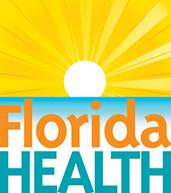It's a New Day in Public Health.
The Florida Department of Health works to protect, promote, and improve the health of all people in Florida through integrated state, county, and community efforts.
Special Interest Resources
Bureau of Preparedness & Response
- 850-245-4040
- health@FLhealth.gov
-
Mailing Address
Florida Department of Health
4052 Bald Cypress Way, Bin A23
Tallahassee, FL 32399
This webpage contains information to assist facility personnel in planning for patient discharge.
Catastrophic Planning
The information is this section focuses on providing guidance and tools to hospitals to respond to any natural or man-made incident, including terrorism that results in a number of ill or injured persons sufficient to overwhelm the capabilities of immediate local and regional emergency response and health care systems.
- CDC Emergency Water Supply Planning Guide - This 2019 revised guide can provide a road map for health care facilities to prepare for, respond, and recover from a total or partial water supply interruption by providing the guidance to assess water usage, response capabilities, and water supply alternatives.
Discharge Planning
The links in this section provide plans, procedures, and guidance to assist hospital personnel in planning for the discharge of patients to help them continue improving outside of a clinical setting.
- AHRQ (Agency for Hospital Research and Quality) Review of Boston Medical Center re-engineered discharge project.
- New York City Rapid Patient Discharge Tool
Hospital Surge
The purpose of this section is to provide guidance to assist hospitals to increase their medical surge capacity and capability. By increasing surge capacity and capability, hospitals can be better prepared to respond to a catastrophic event and triage and treat an increased number of victims. (See Medical Surge for additional information below)
- Agency for Healthcare Research and Quality (AHRQ) - Reopening Shuttered Hospitals to Expand Surge Capacity - Report, Toolkit, and Facility Checklist.
Mass Casualty
The following links provide hospitals with resources that include elements of mitigation, preparedness, response, and recovery. They take into consideration such factors as the appropriateness and adequacy of physical facilities, organizational structures, human resources, and communication systems.
Medical Surge Resources
The following links provide planning documents, checklists, and general guidance for hospitals when they need to prepare for major emergencies or disasters involving human casualties. Such events will severely challenge the ability of healthcare systems to adequately care for large numbers of patients (surge capacity) and/or victims with unusual or highly specialized medical needs (surge capability). (See Hospital Surge for additional information)
Mutual Aid, Coalitions, and Other Partnerships
Information is this section includes sample mutual aid and other agreements for shared resources, guidance, and other tools to assist hospitals develop and implement partnerships and collaborations for community medical surge capacity and capability.
- California Hospital Association - Model Hospital Mutual Aid MOU - Includes link to American Hospital Association MOU model and others
- CDC Public Health Law Program Mutual Aid Agreements
- Facilitating Hospital Emergency Preparedness Introduction of a Model Memorandum of Understanding<
- Hospital Disaster Mutual Aid Overview - Information and additional resources demonstrate the potential offered by mutual aid agreements and provide examples that can be adapted to improve your hospital's mutual aid agreements.
- Polk County Hospitals Memorandum of Understanding for Mutual Aid
Pediatric Preparedness Resources
Hospital Disaster Plans need to incorporate the unique and specific vulnerabilities of children during a public health or mass casualty incident. Planning for the pediatric population needs to be integrated into all aspects and stages of disaster planning. Links in this section provide information and resources to assist hospitals in improving pediatric emergency care and meeting the needs of this population during a disaster.
- AHRQ (Agency for Healthcare Research and Quality) Pediatric Hospital Surge Capacity in Public Health Emergencies
- AHRQ (Agency for Healthcare Research and Quality) Pediatric Terrorism and Disaster Preparedness - A Resource for Pediatricians, prepared by the American Academy of Pediatrics.
- American Academy of Pediatrics Disaster Preparedness - Provides a variety of reports and resources including a policy statement on "Care of Children in the Emergency Department.
- Florida Department of Health Emergency Medical Services for Children in Florida - Contains links to guidance, information, products, and educational tools.
- National Center for Disaster Preparedness Pediatric Preparedness for Disasters and Terrorism - Mailman School of Public Health, Columbia University.
- National Child Traumatic Stress Network - Established to improve access to care, treatment, and services for traumatized children and adolescents exposed to traumatic events. Natural disasters and terrorism are highlighted trauma types for information and resources.
*Note: This page contains materials in the Portable Document Format (PDF). The free Adobe Reader may be required to view these files.
Disclaimer: The links and content provided on this page are for informational purposes and your convenience. The Florida Department of Health (DOH) does not endorse, approve, or guarantee the products, services, or opinions offered on external websites. Furthermore, the DOH is not responsible for the accuracy, content, or availability of these external sites. For questions or concerns, please contact the external site directly.



Connect with DOH